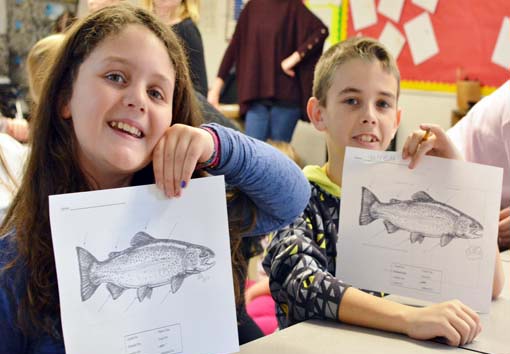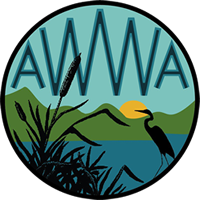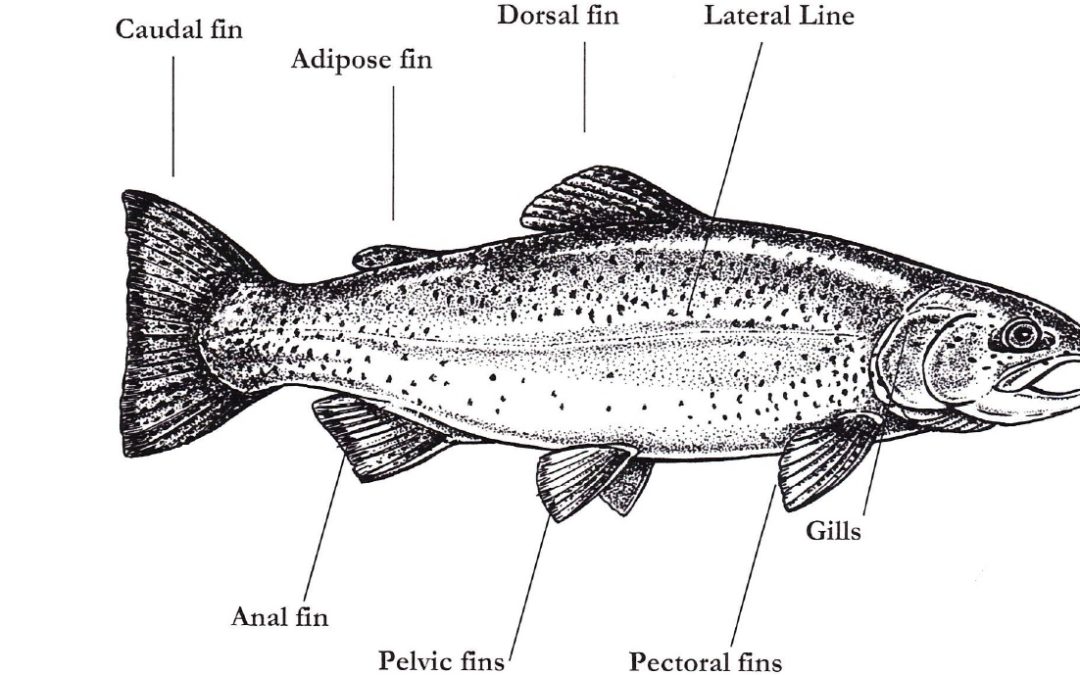On Friday, our fourth grade classes learned about general fish anatomy! The first thing I had the students do was to try and label the basic parts of a fish using a word key. After much debate and uncertainty of their choices, we went over the answers. For a Friday afternoon, the students were extremely engaged and excited to be learning about the animals growing in the back of their classroom. Most could identify the gills, the lateral line, and even the dorsal fin. The other fins are harder to identify, and so are some of their functions. By the end of the class the students knew what all the fins were, and why fish need them.
See below for the fins and their functions:
Caudal Fin: Pushes and steers the trout. They are made of bony spines with skin covering them and joining them together. They can be webbed, as seen in most bony fish, or similar to a flipper, as seen in sharks.
Pectoral Fins: Allows for abrupt changes in side-to-side direction and speed; also acts as brakes to decrease speed while swimming.
Dorsal Fin: Helps keep fish steady. Protects the fish against rolling, and help with sudden turns and stops.
Pelvic Fins: Helps fish swim up and down, turn, and stop quickly.
Anal Fin: Helps keep fish stable while swimming.
Lateral Line: Senses movement and vibration in the water. Helps fish be aware of their surroundings.
Adipose Fin: Soft and fleshy. Its purpose is a mystery, but it may be a sensory function and could be important for the detection and response to sound and changes in pressure.
Gills: Take in oxygen from the water, and allows fish to breathe.

After the anatomy lesson, we took out our trout eggs and alevin to do some observations. The students answered some questions, such as; do they have fins?, what’s the most interesting thing about them?, how well do they swim? etc. By far one of the most interesting things for these fourth graders, was the fact that the alevin feed off of a yolk sac.
We also discussed the life cycle stages of trout and the capabilities they have now versus the future. Currently the alevin can wiggle around, but they do not have the fins they need to swim. As our trout progress, they will begin to grow fins and will have more freedom to move around the tank


AWWA is thrilled that the students are embracing this wonderful experience!

